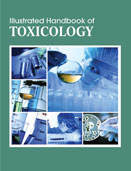Handbooks

Toxicology has matured since it was defined as the ?science of poisons?. Modern toxicology is no longer anthropocentric but takes on different views at various biological systems, including ecosystems. Each will interact specifically when exposed to defined chemical agents, including drugs. Toxicity is no longer a specific property of drugs and chemicals but an operative term to describe the adverse outcome of a specific drugs-host interaction. Newer developments in toxicology have focused on the host. The key to understanding is in the host proteins that interact with the drug and mediate the cellular response. Hence, the proteom, i.e. the complete set of proteins of a cell, an individual or a species, determines how an exposed biological system may interact with the manifold of different xenobiotics. Structure-activity studies try to find out useful predictive parameters for risk and toxicity assessment. This comprehensive text devises learning strategies that build on the fundamentals to aid readers in toxicology. Among the topics deliberated are the potential hostile effects of drugs, pesticides, food additives and industrial chemicals.
Toxicology is the study of adverse effects of chemical substances on living organisms and their environment. It involves observing and reporting symptoms, mechanisms, detection and treatments of toxic substances, in particular relation to the poisoning of humans. It includes environmental agents and chemical compounds found in nature, as well as pharmaceutical compounds that are synthesized for medical use by humans. These substances may produce toxic effects in living organisms including disturbance in growth patterns, discomfort, disease and death. Toxicology is a highly dynamic field which is expanding and adapting as society changes and new demands have to be met.
Illustrated Handbook of Toxicology presents the comprehensive text, highlighting all facets of the field of toxicology. Examines the importance of toxicokinetics and metabolism as well as cellular targets for the mechanisms of toxic effects. The dose of the substance is an important factor in toxicology, as it has a significant relationship with the effects experienced by the individual. It is the primary means of classifying the toxicity of the chemical, as it measures the quantity of the chemical, or the exposure to the substance. All substances have the potential to be toxic if given to living organisms in the right conditions and dose. Toxicology ranges from basic research investigations on the mechanism of action of toxic agents through the development and interpretation of standard tests characterizing the toxic properties of agents. Toxicology provides important information for both medicine and epidemiology in understanding etiology and in providing information as to the plausibility of observed associations between exposures, including occupations, and disease. The Text focuses upon those aspects of toxicology relevant to occupational safety and health. For that reason, clinical toxicology and forensic toxicology are not specifically addressed as subdisciplines of the field. Many of the same principles and approaches described in the text are used in these subdisciplines as well as in environmental health. They are also applicable to evaluating the impacts of toxic agents on nonhuman populations, a major concern of environmental policies. Illustrated Handbook of Toxicology provides a comprehensive introduction to the toxicology, explaining the basic concepts in a proven and modular system. This Handbook is intended to students and researchers in the field of Toxicology.